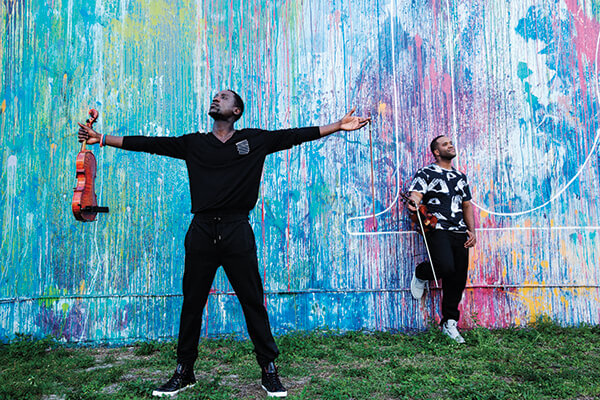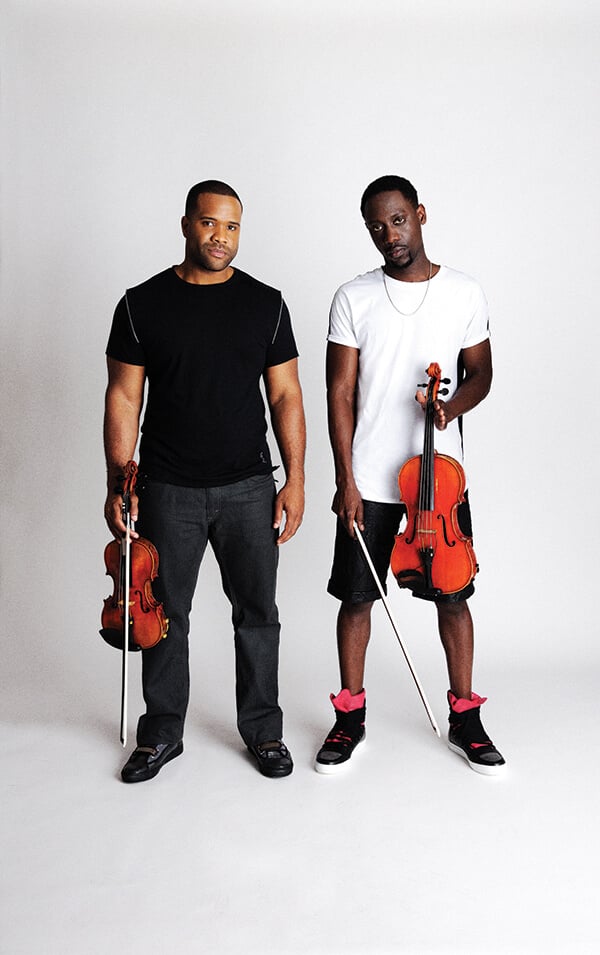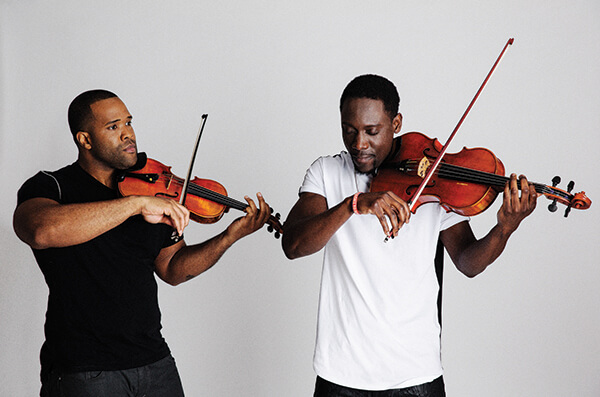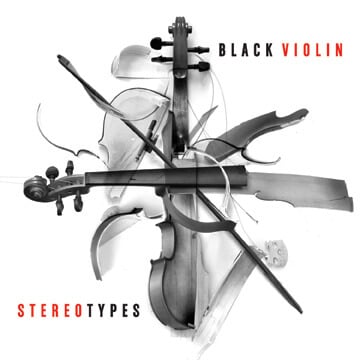BLACK VIOLIN
How riffing on hip-hop beats has inspired a new way to approach classical composition
As musicians and music enthusiasts, we understand the importance of music education. It teaches discipline, appreciation of the craft, a sense of achievement and engagement. Before standing in the spotlight, Wilner “Wil B” Baptiste (viola) and Kevin “Kev” Marcus (violin) were stand partners in high school orchestra. They grew up in a tough neighborhood and were lucky enough to have a music program that pushed them to take classical music seriously. They both would roll into and out of rehearsal with headphones blasting hip-hop and one day, they decided to blend the two genres. Their brainchild, Black Violin, is a totally different stylistic approach to music, performance and composition.
It isn’t hip-hop and it isn’t classical.
With a love of hip-hop and classical training in violin and viola, blending the two genres came very naturally. Their orchestra teacher gave them an opportunity. It’s hard for the duo to verbalize how they evolved as musicians because they are constantly making gains.

Their music bridges the gap between hip-hop and classical music listeners. Both audiences need to experience the balance of the two. Kev makes the argument that classical musical needs it [hip-hop] to keep up with the times, to stay alive, fresh, relevant and to educate the audience via the experience. Hip-hop music draws a younger audience and older people don’t understand it. Kev notes that Black Violin balances the two and allows “younger kids and older people to listen to the same music.” The proportions of their newest album, Stereotypes, are balanced so everyone can appreciate their musicianship.
By pulling classical music into 2015 and beyond, Black Violin does more than bridge the musical gap; they are bridging the generational gap.
The new LP Stereotypes address heavy issues in a light manner. Wil B articulates that “there needs to be beautiful music; music with a message that talks about the past times and where we are now and you can’t help but feel it.” Every time Wil B and Kev step on stage, they break stereotypes with style because they don’t purposely try to do it; not a lot of young black guys play orchestral music. Wil B notes, “Our music could be talking about whatever and we cant help but to break stereotypes. So why not have this album help destroy stereotypes and convey that we have been doing that for years?”

The first track, “Stereotypes,” is aptly named after the album title and sets the tone for the whole record to come. It’s a somber beginning, as the violin and viola harmonize to a lyrical melody. A hip-hop track with a strong downbeat complements the violin soli. The viola joins the violin and hip-hop track and it sounds like a badass movie score. The musical composition is taken to a whole different level. The strength of the song is elevated when it morphs into spoken word about what the word stereotype means to different people.
We hear Kev in the studio, very candidly, talking about his experience with race and stereotypes. He speaks from the heart: “Just because I’m 6 foot 2, 260 pounds doesn’t mean you’re supposed to be afraid of me.” He goes on to say, “Although I wish that it didn’t [stereotypes] exist, I’m kinda glad for it because now it gives me a goal and something to try to debunk. The reason I smile on stage is because I know I’m completely crushing people’s perspectives of not only what a violin can do, or what music could possibly sound like, but also what a black man is capable of.” This is the most important song on the album because it truly defines Black Violin and everything they are capable of.
Even the instrumental tracks convey messages; you can feel the story and emotions unfold as Kev and Wil B melodically play the violin and viola. The intensity and precision is there when they are playing slow, lyrical sections and when they are playing intricate sections at a faster tempo. Kev notes that the music just happens. They had had the idea of making an album expressing the stigma around stereotypes and they injected that into the songs; like everything else they do, everything blends together.

Musically, their process varies; sometimes it starts with a hip-hop beat, a violin riff or a vocal idea. By going with the flow, they adjust and refine what will impact the song in the biggest way.
They play with such precision but it doesn’t sound calculated or clinical, a common trap many classically trained musicians fall into when crossing genres. The music flows out of their instruments almost as if they are extensions of themselves. Their rehearsals are as I imagined; they break out the instruments and jam. That’s when the magic happens. Wil B notes, “Techniques are not forced. We allow it to flow. We aren’t trying to come up with a crazy concept.”
He further notes that they have been “living this stereotype thing since we started,” but a light shines brightest in the dark. They have taken their life experiences, musical and non-musical, and turned it into wisdom. Wil B is introspective and urges musicians to “wake up in the morning and not put a mask on.”
“Don’t be afraid to fail and fall. It’s okay to fall. You’ll understand and not do that again.”
Kev simply stated “arm yourself with as many tools as possible” because it is important to understand every aspect of the music industry from publishing to merchandise. In a world where you barely hear live instruments, you have to look at music from a different perspective. Making music different from the stereotypical sound the music industry promotes has taught Black Violin some hard lessons, but the key is staying true to themselves. In the words of Wil B: “it’s easy to be yourself.”
Follow on Twitter @BlackViolin

Black Violin
Stereotypes
Standout Track: “Stereotypes”
BUY NOW on iTunes
photography by Lisa Leone
